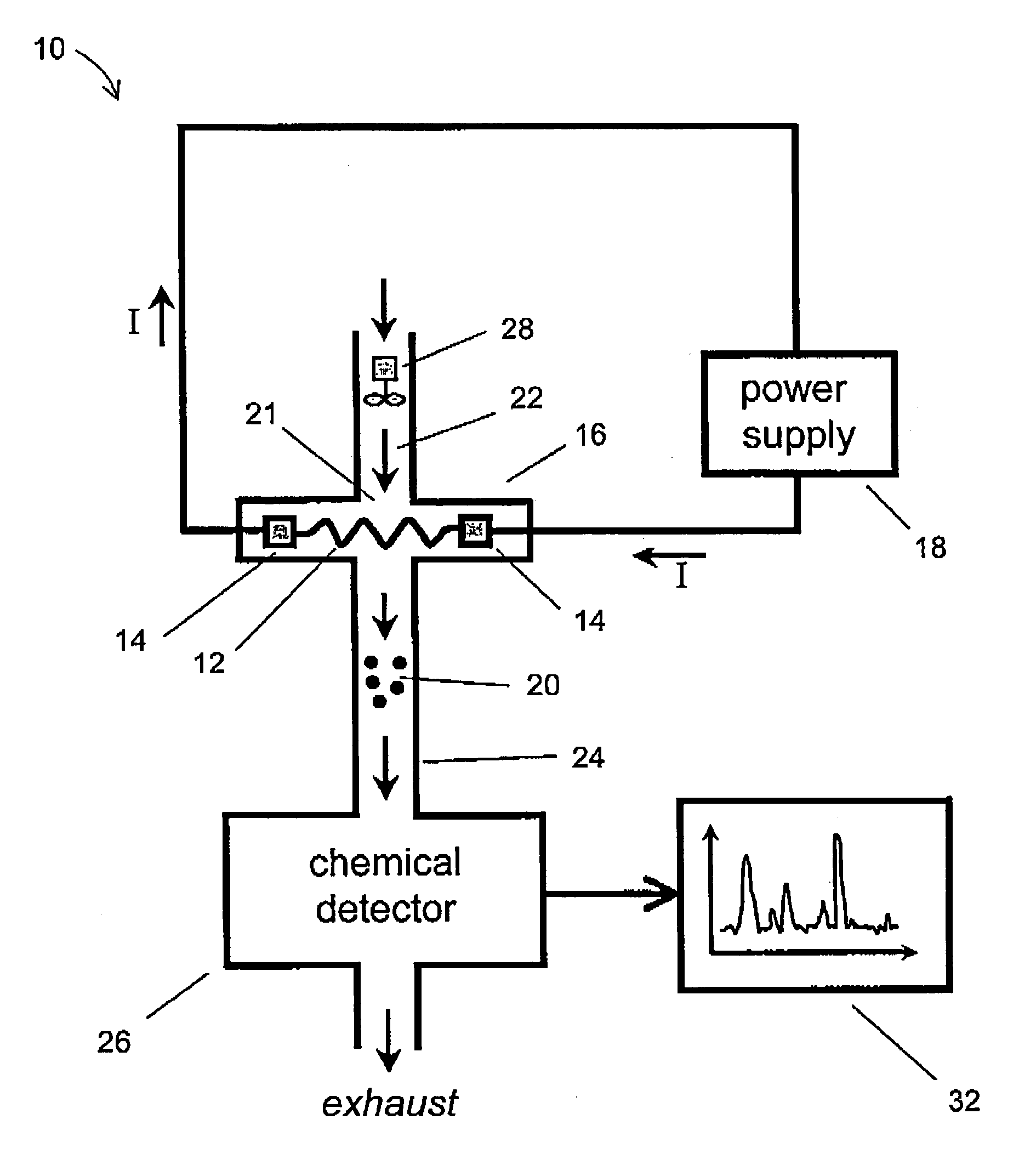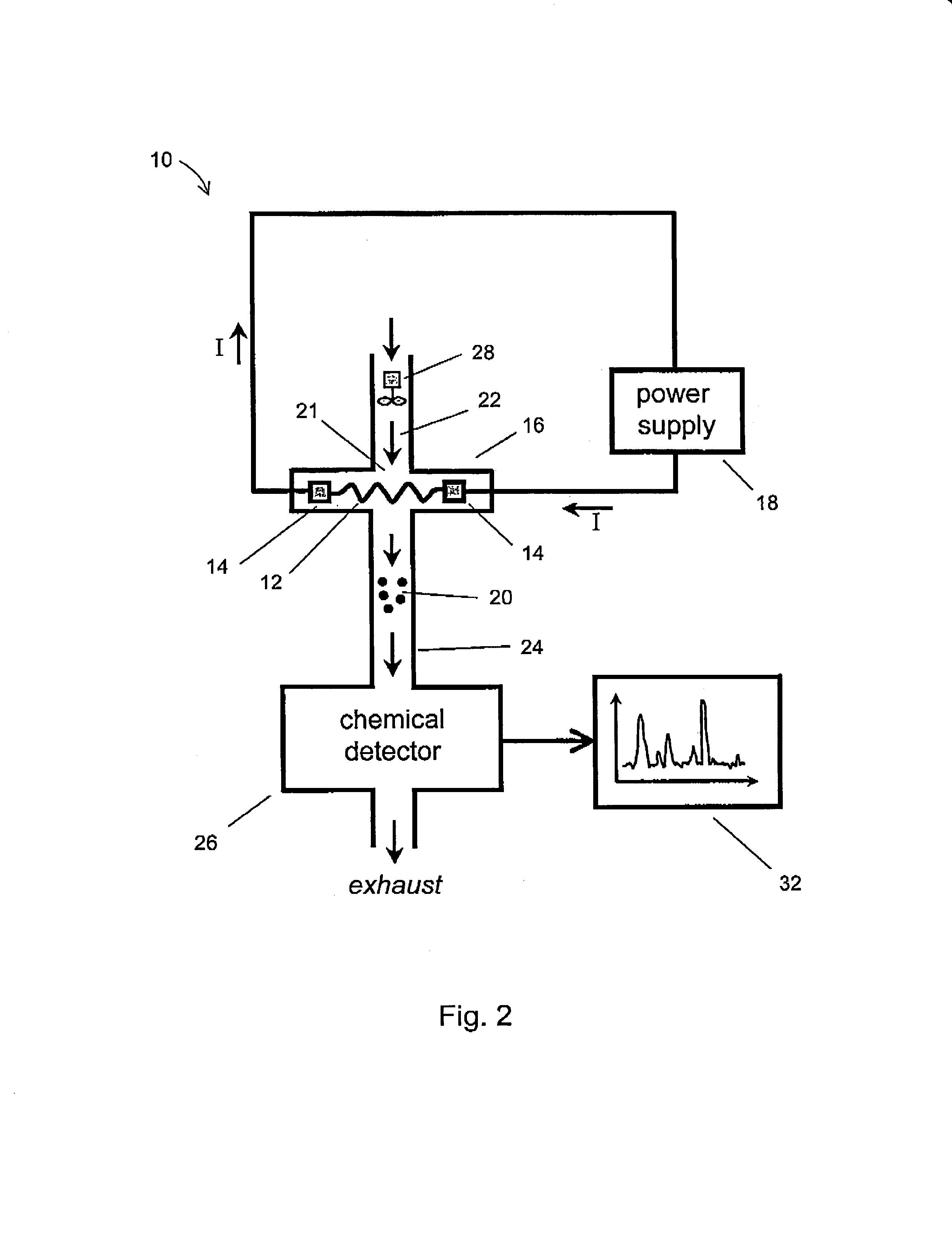Analyte separation utilizing temperature programmed desorption of a preconcentrator mesh
- Summary
- Abstract
- Description
- Claims
- Application Information
AI Technical Summary
Benefits of technology
Problems solved by technology
Method used
Image
Examples
Embodiment Construction
[0031]The term “porous mesh” is broadly defined to include other forms of porous structures, in addition to a mesh structure, including a metallic filter, a felt or felt-like mat of finely-drawn wires, a woven screen of metal wires, a porous foamed metal structure, a microporous metallic filter with microholes, and a felt-like mat of sintered metal wires. The term “controllably releasing” means thermally desorbing and releasing a selected subset of contaminants from a contaminated mesh by rapidly raising the mesh to a pre-determined temperature step or plateau that has been chosen beforehand to preferentially desorb a particular chemical specie of interest, but not others. For example, PETN preferentially desorbs from a stainless steel mesh at lower temperatures, around 50-100 C, while RDX preferentially desorbs at higher temperatures, around 150-200 C By providing a sufficiently long delay or dwell period in-between heating pulses, and by selecting the optimum plateau temperatures,...
PUM
 Login to View More
Login to View More Abstract
Description
Claims
Application Information
 Login to View More
Login to View More - R&D
- Intellectual Property
- Life Sciences
- Materials
- Tech Scout
- Unparalleled Data Quality
- Higher Quality Content
- 60% Fewer Hallucinations
Browse by: Latest US Patents, China's latest patents, Technical Efficacy Thesaurus, Application Domain, Technology Topic, Popular Technical Reports.
© 2025 PatSnap. All rights reserved.Legal|Privacy policy|Modern Slavery Act Transparency Statement|Sitemap|About US| Contact US: help@patsnap.com



